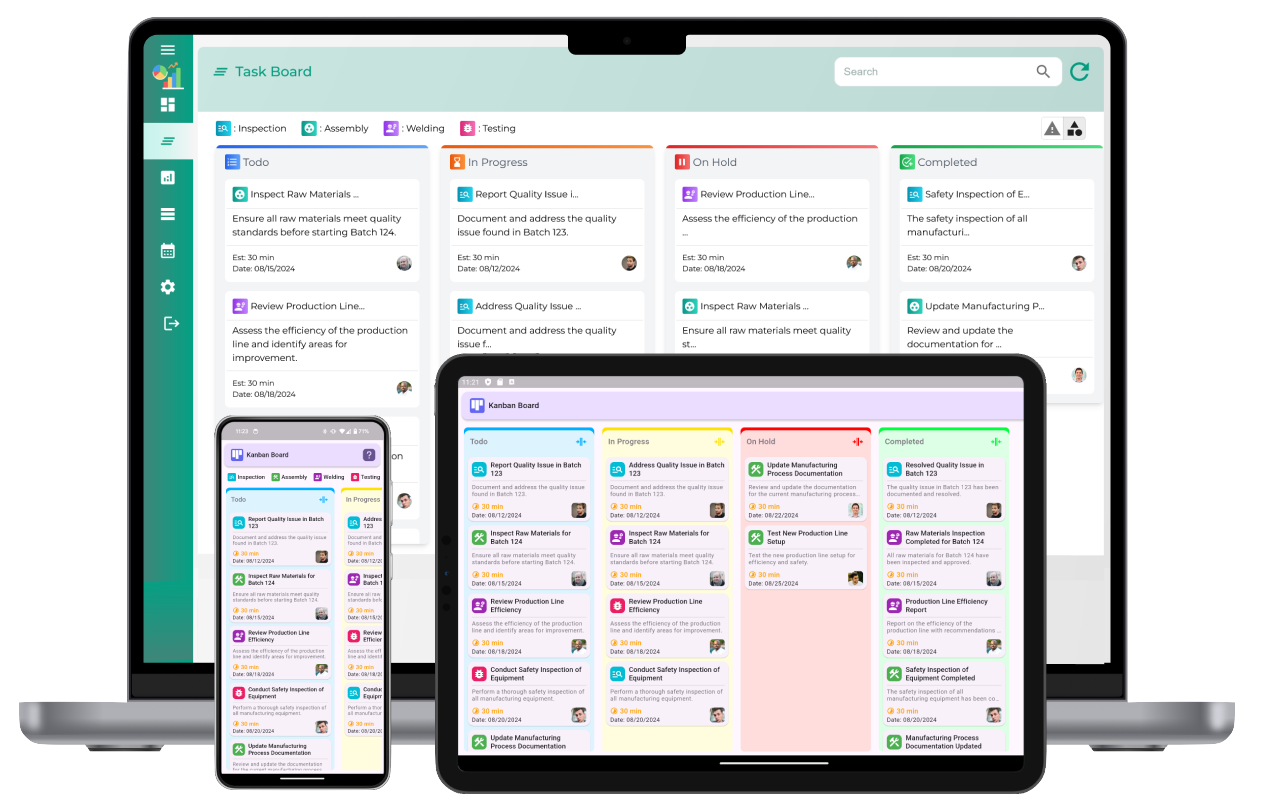In today's fast-paced work environment, optimizing productivity and streamlining workflows are crucial for achieving business success. Digital Kanban boards offer an effective solution for managing tasks, tracking progress, and improving team collaboration. By leveraging these boards, organizations can enhance efficiency and achieve their goals more effectively. This article explores the benefits of digital Kanban boards, key features to look for, and best practices for maximizing productivity.

Understanding Digital Kanban Boards
Kanban boards originated from Toyota's manufacturing process, designed to improve workflow efficiency and manage inventory. The core concept involves visualizing tasks on a board, where tasks are represented as cards and are moved through various stages, such as "To Do," "In Progress," and "Done." Digital Kanban boards bring this concept into the digital realm, providing a versatile and interactive tool for modern project management.
Benefits of Using Digital Kanban Boards
1. Enhanced Visibility: Digital Kanban boards provide a clear, visual representation of tasks and their status. This transparency helps team members quickly understand what needs to be done, what is in progress, and what has been completed. The visual layout also makes it easy to identify bottlenecks and potential issues in the workflow.
2. Improved Task Management: By breaking down tasks into smaller, manageable components, digital Kanban boards help teams focus on specific aspects of a project. This approach makes it easier to track progress, prioritize tasks, and ensure that deadlines are met.
3. Real-Time Updates: Digital Kanban boards offer real-time updates, ensuring that all team members have access to the latest information. Changes made by one team member are instantly reflected on the board, reducing the risk of miscommunication and ensuring everyone is on the same page.
4. Enhanced Collaboration: Many digital Kanban boards come with features that facilitate collaboration, such as comment sections, file attachments, and notifications. These tools help team members communicate effectively, share information, and work together more efficiently.
5. Remote Accessibility: With digital Kanban boards, team members can access the board from anywhere with an internet connection. This remote accessibility is particularly valuable for distributed teams, allowing them to stay connected and coordinated regardless of their location.
Key Features to Look For
When choosing a digital Kanban board tool, consider the following features to ensure it meets your needs:
- Customizable Boards: Look for tools that allow you to create and customize boards to fit your workflow. This includes the ability to add and modify columns, labels, and card types.
- Task Tracking and Management: Ensure the tool offers features for tracking task progress, setting deadlines, and assigning tasks to team members. Integration with calendar tools can also be beneficial.
- Integration Capabilities: Choose a digital Kanban board that integrates with other tools you use, such as project management software, communication platforms, and file storage systems. Integration helps streamline workflows and reduce manual data entry.
- Real-Time Collaboration: Look for features that support real-time collaboration, such as live updates, commenting, and notifications. These tools help keep everyone informed and engaged.
- Reporting and Analytics: The ability to generate reports and analyze data is crucial for assessing productivity and identifying areas for improvement. Choose a tool that offers reporting features and insights into task performance.
- Mobile Accessibility: Ensure the digital Kanban board has a mobile app or a responsive design that allows team members to access the board on their smartphones or tablets.
Best Practices for Using Digital Kanban Boards
To maximize productivity with digital Kanban boards, follow these best practices:
- Define Clear Workflow Stages: Clearly define the stages of your workflow and ensure they are represented on the Kanban board. This helps team members understand the process and where each task stands.
- Keep Tasks Specific and Manageable: Break down tasks into smaller, actionable components. This approach makes it easier to track progress and ensures that tasks are manageable and achievable.
- Regularly Update the Board: Ensure that the Kanban board is updated regularly to reflect the latest status of tasks. Regular updates help maintain accuracy and prevent miscommunication.
- Encourage Team Participation: Encourage all team members to actively use the Kanban board, update tasks, and communicate through the platform. Active participation ensures that everyone stays informed and aligned.
- Review and Adjust Workflows: Periodically review your workflows and make adjustments as needed. This helps address any inefficiencies and ensures that the Kanban board continues to meet your team’s needs.
Conclusion
Digital Kanban Boards offer a powerful tool for maximizing productivity and improving task management. By providing enhanced visibility, real-time updates, and improved collaboration, these boards help teams streamline their workflows and achieve their goals more effectively. By selecting the right tool and following best practices, organizations can harness the full potential of digital Kanban boards and drive success in their projects.